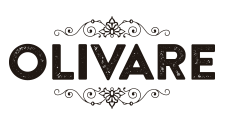Introduction
Risk assessment is an essential part of any betting strategy, whether you’re a casual punter or a seasoned gambler. It’s about understanding how much to bet on each event and adjusting your stakes according to various factors such as the likelihood of winning, potential losses, and overall bankroll management. In this article, we’ll explore https://bettycasinoca.com/ different risk assessment strategies that can help you make informed decisions about when to increase or decrease your betting stakes.
Understanding Your Bankroll
Before diving into specific risk assessment strategies, it’s crucial to have a solid understanding of your bankroll – the amount of money you set aside for betting. A well-managed bankroll is essential for long-term success and can help you avoid significant financial losses. Here are some key aspects to consider when determining your bankroll:
- Set aside an amount that won’t significantly impact your finances if lost.
- Determine how much you’re willing to risk on each bet (e.g., 1%, 5%, or 10% of your total bankroll).
- Consider the volatility of the events you’re betting on and adjust your stakes accordingly.
Risk Assessment Strategies
There are several risk assessment strategies that can help you make informed decisions about your betting stakes. Some popular approaches include:
The Kelly Criterion
This strategy, developed by John L. Kelly Jr., takes into account the probability of winning (p) and the odds (o) to calculate an optimal bet size. The formula is as follows:
[ \text{Bet Size} = \frac{\left(p-\frac{1}{o}\right)}{\left(1-\frac{1}{o^2}\right)} \times \text{Bankroll} ]
The Martingale System
This strategy involves doubling your bet after each loss to recover previous losses and make a profit when you win. However, it’s essential to remember that this approach can lead to significant losses if the losing streak continues.
- Advantages: Potential for high returns with short-term wins.
- Disadvantages: High risk of large losses due to consecutive losing bets.
The D’Alembert System
This strategy involves increasing your bet by one unit after a win and decreasing it by one unit after a loss. This approach helps manage risk and can lead to more consistent results.
- Advantages: Encourages balanced betting habits.
- Disadvantages: May not be suitable for high-stakes or fast-paced events.
The Fibonacci System
This strategy involves increasing your bet by the next number in the Fibonacci sequence (1, 2, 3, 5, 8, 13, etc.) after a loss. This approach helps manage risk and can lead to more consistent results.
- Advantages: Encourages balanced betting habits.
- Disadvantages: May not be suitable for high-stakes or fast-paced events.
Adjusting Your Stakes
Now that you’ve chosen a risk assessment strategy, it’s time to adjust your stakes according to various factors. Here are some key considerations:
Event Probability and Odds
The likelihood of winning and the odds offered can significantly impact your bet size. Higher probability bets tend to have lower payouts, while lower probability bets offer more significant rewards.
- Adjustment: Increase stakes for high-probability bets with low payouts.
- Adjustment: Decrease stakes for low-probability bets with high payouts.
Event Volatility
High-volatility events can lead to rapid losses if not managed correctly. Consider adjusting your stakes accordingly.
- Adjustment: Increase stakes for low-volatility events (e.g., tennis, golf).
- Adjustment: Decrease stakes for high-volatility events (e.g., football, basketball).
Bankroll Management
Your bankroll can impact your betting strategy. Consider adjusting your stakes based on available funds.
- Adjustment: Increase stakes when bankroll is low to maximize potential returns.
- Adjustment: Decrease stakes when bankroll is high to minimize risk.
Conclusion
Risk assessment is a crucial aspect of any betting strategy. By understanding your bankroll and choosing the right risk assessment strategy, you can make informed decisions about your betting stakes. Remember to adjust your stakes according to various factors such as event probability and odds, volatility, and bankroll management.
